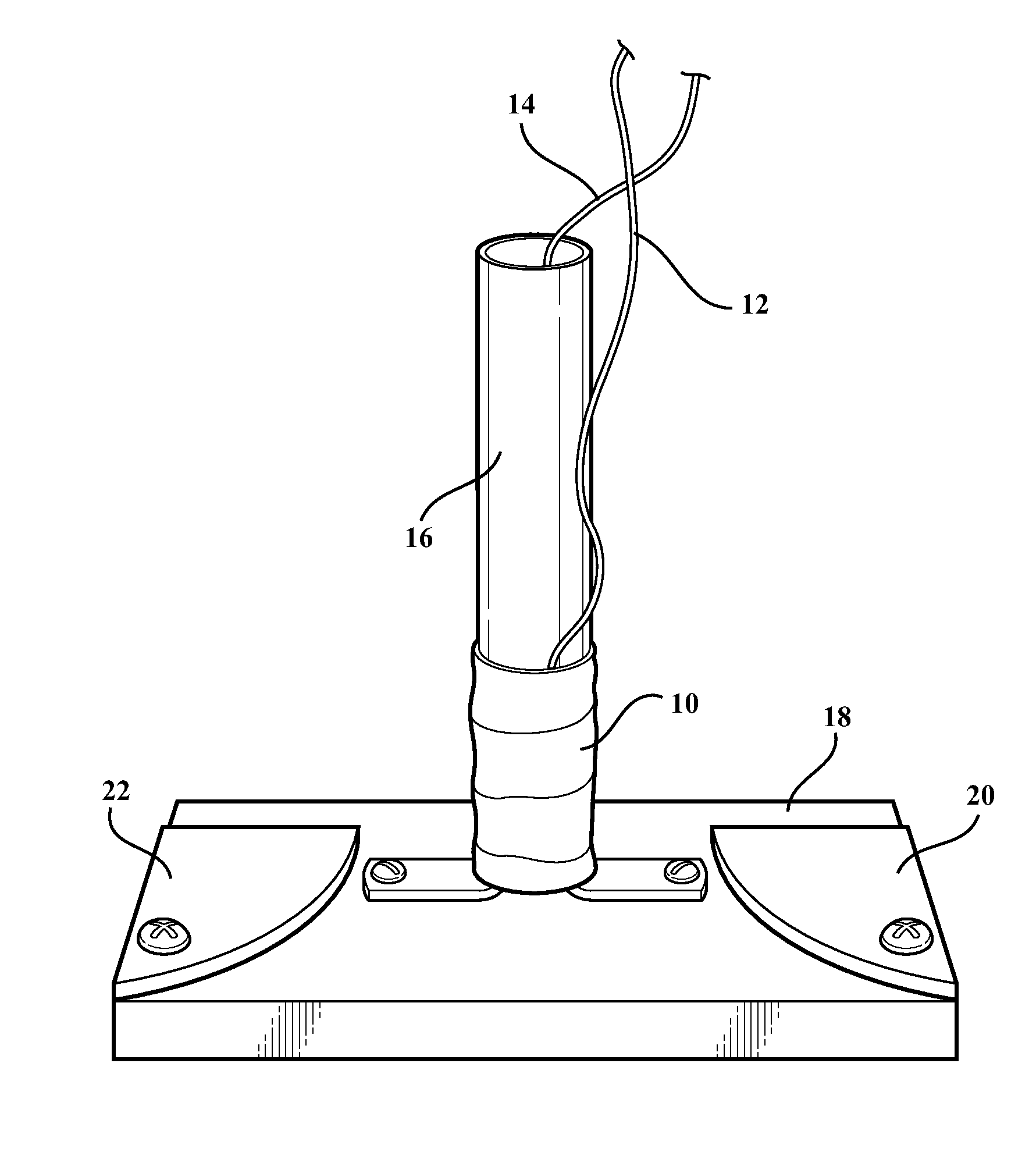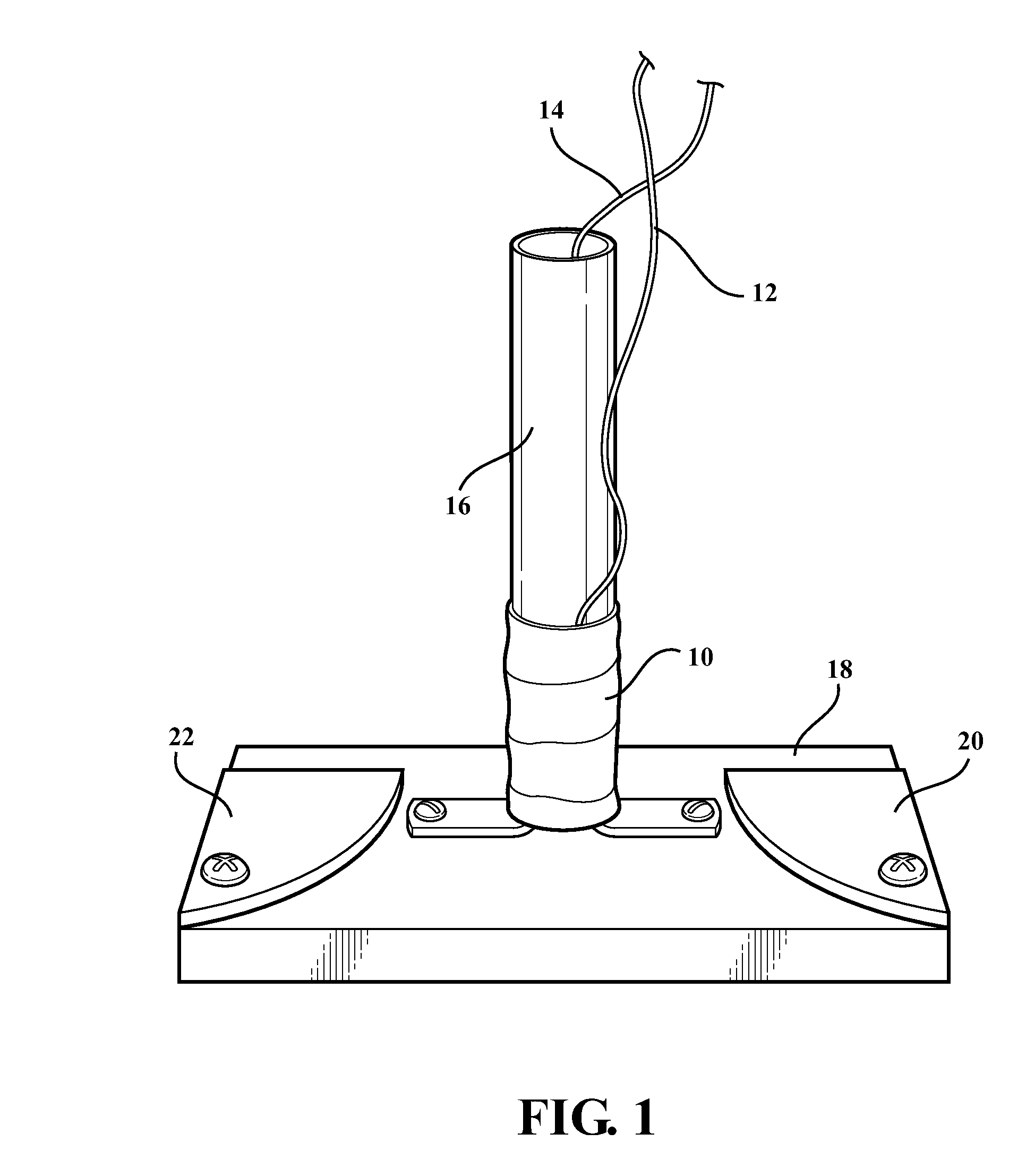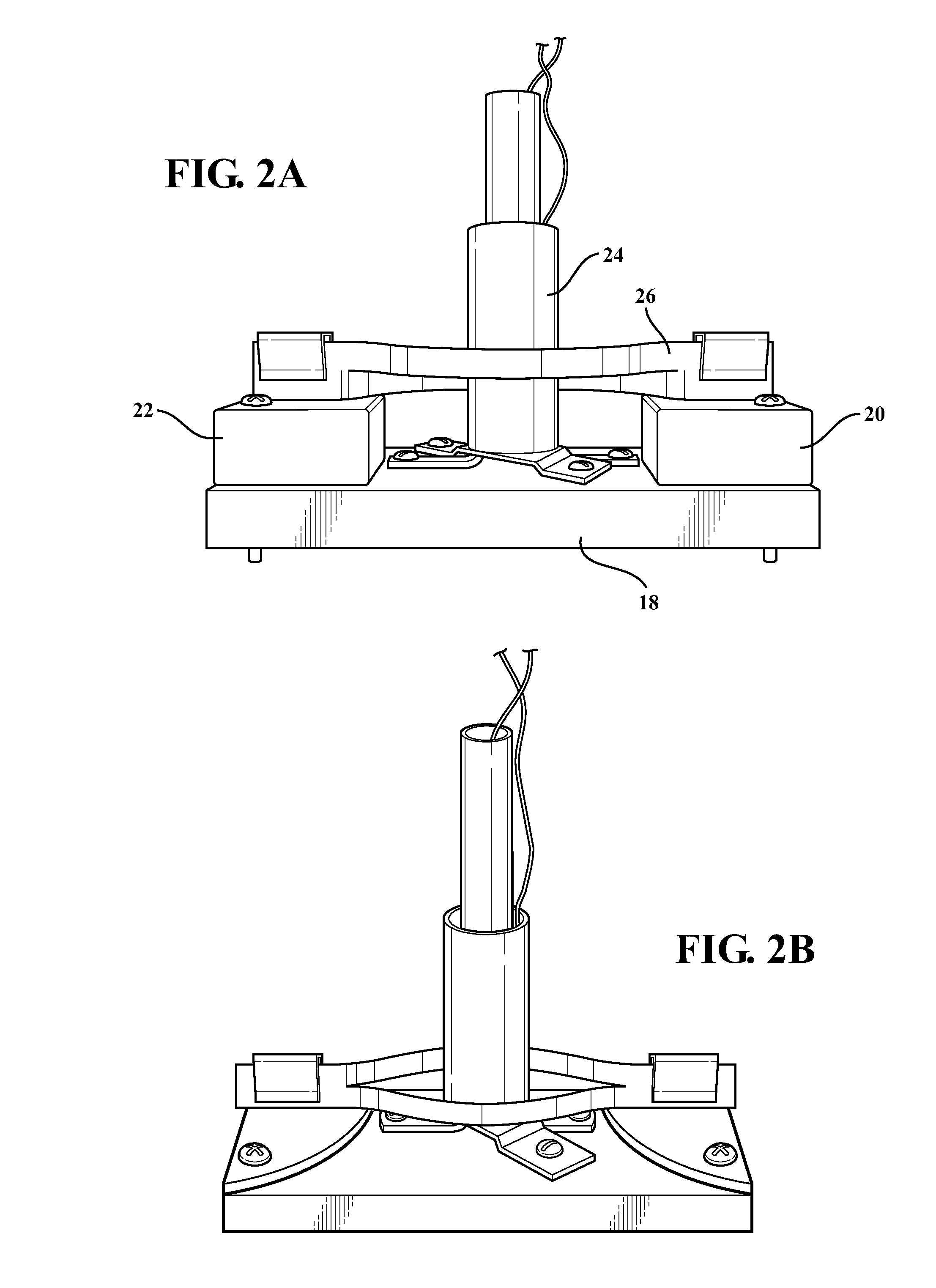Superconducting device and method for inducing low relaxation rate in superconducting material
- Summary
- Abstract
- Description
- Claims
- Application Information
AI Technical Summary
Benefits of technology
Problems solved by technology
Method used
Image
Examples
example 1
[0039]A resistive solenoid is formed of a copper wire of gauge 25 by winding around a brass solenoid support tube with a diameter of 12.6 mm a total of 300 times. The termini of the wire are connected to a direct current power source to generate a current though the solenoid.
[0040]A coil former made of brass and having an inner diameter of 18.8 mm and outer diameter of 22.1 mm suitable to fit over the resistive solenoid is placed over the resistive solenoid so as to entirely encompass the resistive solenoid.
[0041]A superconducting material purchased from SuperPower Inc. (SuperPower coated conductor product batch number M3-1060-3 SF12050-AP, with critical current of 309 A) was cut into samples of 110 mm in length. A 1 mm wide slit was milled in each of them resulting in the loops shown in FIG. 2. They were stacked together making a “coil” with 2 to 6 loops per coil and the main diameter of 22.6 mm. To preserve the quality of the superconducting material, the coils were encapsulated i...
example 2
[0043]The device of Example 1 is immersed in liquid nitrogen to cool the superconducting material to a temperature below its critical temperature. During this time, a DC electric current is passed through the resistive solenoid at 3 A. When the critical temperature of the system of 77° K. is reached, the current is terminated which inducted the superconducting current through the superconducting material as observed by a Gaussmeter inserted into the inner diameter of the solenoid support tube. The magnetic field is directly proportional to the circulating in the loop superconducting current, so that the change in measured magnetic field directly reflects the change in the superconducting current. The changes in the superconducting current over time are depicted as the control run in FIG. 4 illustrating the expected rate of relaxation for this superconducting material.
[0044]To reduce the rate of relaxation, a modified current sweep reversal is used to generate an electric current thr...
PUM
| Property | Measurement | Unit |
|---|---|---|
| Diameter | aaaaa | aaaaa |
| Diameter | aaaaa | aaaaa |
| Current | aaaaa | aaaaa |
Abstract
Description
Claims
Application Information
 Login to view more
Login to view more - R&D Engineer
- R&D Manager
- IP Professional
- Industry Leading Data Capabilities
- Powerful AI technology
- Patent DNA Extraction
Browse by: Latest US Patents, China's latest patents, Technical Efficacy Thesaurus, Application Domain, Technology Topic.
© 2024 PatSnap. All rights reserved.Legal|Privacy policy|Modern Slavery Act Transparency Statement|Sitemap



